Range Top Questions ~Monogram~ Thermador ~ Wolf + Too many BTUs?
TonySak
13 years ago
Featured Answer
Comments (17)
deeageaux
13 years agoantss
13 years agoRelated Discussions
Need 48' Range-Reviews of GE Monogram, American, BlueStar, Wolf?
Comments (23)I purchased a wolf dual fuel 48" 9 months ago and after several service calls, Wolf did a buy back on the range. It was kind of strange, I would have been ok with another range but they did not want to switch it out. They were very nice, tried to service it but never really looks at the internals, instead would send a chef out here to cook in it and troubleshoot it. My issue was mainly the convection. Cook on one rack, no issues, cook on all of them like cookies and extremely uneven cooking from top to bottom and back to front. Not satisfied. Hated the lack of rolling racks, I find the racks hard to pull out. Had the double griddle. Fantastic to cook on but the grease catcher does not catch grease, instead it fills up, overflows underneath and makes quite the mess, even when the catcher is not full....they even mentioned that it is a design flaw. The actual service help after was good in most respects, would I buy another wolf? maybe some day, but not that range for sure. Also, took forever to heat up and boiling a pot of water took too long for such a beautiful unit. I am now purchasing a capital culinarian...hoping for much better results........See MoreThermador or Wolf propane gas range top?
Comments (7)I like that my Wolf has the same power, high and simmer, on all burners. I believe in the dual ring of flame over Thermador's star burner. If I wanted the star shaped flame, I'd go with BlueStar. I don't know which Wolf you're going for...the open or sealed burners...but my open burners have 1 grate per 1 burner, so they're not too heavy and awkward to move, but the Thermador and sealed burner Wolfs have 1 grate per 2 burners, so dbl long and dbl heavy. Wolf has the higher BTU ratings. Do you have natural gas? If you're using propane, the Thermador offers only 13K BTUs instead of 15K it offers with NG. The Wolf is designed for the type of fuel used, so there is no BTU difference. The other reason I didn't consider Thermador, which probably doesn't apply to you, but we wanted a 48" with all burners and no griddle or grill, and they didn't offer that configuration. I think Thermador has a 1 yr warranty where Wolf has a 2 yr. The only problem I've had with my Wolf is that the grates had little rubber feet that degraded very quickly. They make a new type of grate now, which they sent immediately. They also sent new underpans, since they weren't 100% sure the new grates would fit the holes in my original ones. They did fit, so now I have 2 sets of the underpans, just because Wolf didn't want me to be inconvenienced with a 'wait and see' plan. The great reports about their customer service is what pushed me the last bit toward deciding for Wolf. I obviously haven't used a Thermador to compare. I am very happy with the performance of my Wolf. Not all that crazy about the shiny black under pans for cleaning, but at least I can take them out when necessary. I was concerned about the sealed vs open burner issue on models like Thermador. But you will hear both sides of that argument here, and it seems to have to do with personal preference, as well as cooking and cleaning style....See MoreComparing Thermador 30" Duel Fuel Range vs. GE Monogram 30" Dual Fuel
Comments (26)"Commercial bakeries use nothing but gas ovens." This is not true. If you are talking about bulk bakeries, they are more inclined to because it is often cheaper but they also have steam injectors to add humidity when needed. I know several specialty bakeries that use electric ovens. Many deck ovens in commercial kitchens are electric. I knew of a bakery that was called "the Electric Bakery". It really depends a lot on what they are baking. I know a baker that has specialty ovens for pies. This really has nothing to do with home ovens because they are a different breed anyway as they are expected to do many different things. "Dual fuel is excessively expensive, and overly complex for no benefit in performance ." Performance is different things to different people. They have different needs so there is no one size fits all. If I were selling appliances, the first thing would be to assess that person's needs and make individualized recommendations based on those needs. I most likely would never recommend ranges to begin with unless there was a compelling reason like space or cost issues or even a preference for "looks" over cooks. Pick out each component because it meets individual needs in the best way possible. As far as cost, you can buy electric ovens with features that have high utility for less than some gas ovens with limited features. Electric ovens can be complex, but so are our home computers and cars these days. This is not necessarily a bad thing. These ovens can have features that many consider helpful in how they use their ovens. It takes a computer board to coordinate fans, heating elements and tight temperature control. I love being able to control the direction of heat and fan speed in my oven. I can have air movement slow or fast to facilitate browning or not if I am baking a cake. It has a lot greater range of temperature, with or without the fan than many ovens gas or electric that cost a lot more. There is a learning curve with these features especially with the many choices something like Gaggenau or Miele give you. The combi oven is the king of control of the cooking environment but not in a range yet. The other side of the coin is some ovens have this figured out and others, not so much, so you have to read as many reviews as you can. To minimize risk if you want these features, buy the longest service agreement that you can. They can be difficult to evaluate and compare because a feature named the same name in two different brands can mean two different things. Even the term "dual fuel", in most ovens it means gas burners and an electric oven but 5 Star when they say dual fuel means a gas oven and electric oven together in the same range. You have to decide what is a benefit and what is a burden? No one answer. "could you please explain why all gas is fine" "All gas is fine." I might agree with that statement depending on how you use your oven but that in no way means they are the same and it in many cases gas is not the best choice. Gas and electric ovens are constructed differently. Because you have combustion for your heat source, another difference, gas ovens are vented more to remove products of combustion including water, so those products of combustion and humidity from food move out of the oven and into the kitchen. That may be good or bad depending on where you live, but how is that significant to cooking? It is much more difficult to keep added steam in a gas oven if you are doing that for bread or adding a pan of water for cheesecake. Because there is more of an air current, in a gas oven, this removes more moisture from the surface of what you are cooking. This inhibits starch gelatinization during the first part of baking so inhibits rise and changes the appearance of what you are baking. On the other hand, because it evaporates moisture from the surface and allows it to heat more quickly, the Maillard and other browning chemical reactions take place more quickly. This is why meat, vegetables and even baked goods brown more quickly. Will you notice? A lot of people say they don't. I have baked in gas and electric ovens for over 50 years and I used to attribute differences in outcomes to different ovens rather than a difference in fuel but with the many books and websites that have come out on food science, you can see the rationale for the differences in outcome that cooks report in cooking/baking forums. It was kind of a "aha" moment to put these comments with the science. All of the information coming out challenges what used to be conventional wisdom and yet it might be hard to see if you are not baking the exact same recipe side by side. You do see the same observations cooks make repeatedly in terms of cooking on cooking and baking forums and people seem to notice the difference more coming from electric to gas but you do see the occasional comment about excess moisture in some electric ovens when they are coming from gas. Most advertising literature and websites about ovens actually say a gas oven provides moist heat and electric dry but they are only looking at the heat source and not the oven as a whole and the process of cooking which provides a lot of moisture to the oven chamber. Another difference is that there are more and more features being loaded into ovens now as noted above, mostly electric but sometimes gas too. Some electric ovens have added steam. Combi ovens are very useful in their ability to control humidity and really make the case for buying ovens separate from the range top instead of having to pick the priority of the burners or the oven. I am not a fan of the current trend of hiding the bake element in electric ovens. Sometimes with pies, you need that bottom element exposed. It used to be you could put a tray under the element to catch spills. If you put it on the bottom now, it will melt. Some other things to consider. gas broilers are of two types. There is the traditional gas broiler, but they are not very good. Many prostyle gas ovens have an infrared broiler. They are very hot and even, but can be small. They are great for a couple of steaks but not so much trays of appetizers or broiling larger amounts. How big is the oven? Do you want a quick preheat or need room for full commercial sheets? Look at the rack size for usable space and size top to bottom. What is the temperature range, lowest and highest? What are the increments that you can set your temperature? 25F or 5F? Ovens are not an easy choice these days but I think it helps at least some people to realize the differences so you can at least make a somewhat informed decision....See MoreWolf, Viking, Thermador, GE Monogram gas oven which is the best
Comments (8)I can't tell you what is best from what you said. There are so many styles of cooking. Some people use high heat a lot for stir frys while others are more the simmering type. Some people here say they are amateur chefs while others are home cooks. Some are cooking for two while others cook for 10 for three meals a day. Cookware can range from small pots to large 14" frying pans. Some people cook with cast iron or enameled cast iron while others have restaurant grade aluminum or heavy gauge copper. These vary a lot in their ability to transfer heat so vary in how evenly they heat. Most people these days seem to have some version of stainless which can be all over the place depending on the metal in the layers. The ranges that you are looking at are all very different in what they do and BS is very different from the others. You will hear people advise on this forum "open burners are the best" What does this mean? Manufacturers use confusing terminology. Several claim to have "open" burners which can be very misleading because they are not all talking about the same thing. Looking at the specific parts of the burner and using specific terminology will help you see what will help you. "Open" actually refers to the burner tray when it has an open area around the burner. The tray can also be sealed -or fixed to the burner. The sealed tray came about in the mid 1980s to keep spills from going down into the works of the range. At the same type the burners were capped to prevent food from going into the burner ports. Before that all gas burners were open. You can still buy very inexpensive open burner ranges. Some burners have a tray that comes very close to the burner but disassembles for cleaning. There are all kinds of variations now so it is important to use specific terminology so you understand what you are getting. BS has a pull out tray under the burners to make it easier to clean. People have very strong opinions sometimes either way about which is easier to clean. Wolf and Thermador are sealed so it is pretty straight forward. This shows how a BS is cleaned. https://youtu.be/3K2DR2ub1sA To understand the difference in how these burners relate to cooking, look at some of the aspects of design that give certain functions. In looking at burners, consider the BTUs, high if you like to stirfry or need to heat something quickly. Look at the low end of The BTU range of the burner if simmer is important. A lot of burners have higher BTUs now, but BS has a couple of things that affect how the heat is applied to the pan. They do not have a burner cap. This allows the heat to go straight up. This is what some people mean when they say "open". A cap causes more spread of the flame on highest heat. Wolf has a dual stacked burner so there is a little less of the flare because you really have two burners and the range of heat is spread over two burners. Another important design aspect is the shape of the burner. The BS has a star configuration which distributes heat over a greater area. This is the BS star burner top and Wolf on the bottom The star burner is an advantage in getting heat to the bottom of a wok or gives better distribution on cookware that does not distribute heat very well like cast iron, enameled cast iron or some stainless but the cookware must be sized to the burner to take advantage of the star configuration. If you have a ring burner, your cookware can also distribute heat if you have thick copper or aluminum. The burner ports are also aligned on the sides of the rays of the star so as you turn the burner up, the flame stays in a specific area. A ring capped burner will flare more on high heat. I have Wolf so this actually works well for me. I like that the burner flares because I use high heat on big frying pans. I also have heavy aluminum or copper so the star is not as much as a benefit for me. I don't really want heat toward the middle but others do. I would try to find "live" demo ranges and take some of your cookware and see how this will work with your pans. Here are some burners with different features. You can see why you need specific terminology rather than just the ambiguous term "open". Star capped burner sealed tray. Probably one of the widest burners on high heat. Thermador. Star shaped, uncapped burner, semi sealed tray in that it comes very tight to the burner but comes off for cleaning (American Performer) Capped burner, open tray, an (older Viking). They advertised this as "open". 23K, Triple ring, uncapped burner. Semi sealed tray. Capital. Advertised as "open" BlueStar actually has several types of ranges. In my order of preference. RNB-high BTU, 22K star shaped, open tray RCS, lower BTU, 15K, star shaped, open tray sealed burner, 21K BTUs, ring burner, sealed tray Platinum, highest BTU, and you can change out an overlay griddle tray for a grill. The oven is odd in that all the heat comes from the back and the convection never shuts off completely. There is also a brand called Big Chill that has a pro model made by the company that makes BS closest to the sealed burner model. https://bigchill.com/30-pro-range.html Another aspect of performance is the oven. Look at the broiler size. I don't know what you have now but most prostyle ovens have a gas infrared broiler. Much hotter than a regular gas broiler but often small. The Monogram has a reversing convection fan. One of the problems with a convection fan is that it can set up an air current that makes hot spots. Manufacturers deal with this by using baffles or two fans with varying degrees of success. The fan in the Monogram reverses periodically to avoid hot spots. Monogram and BS I believe will both hold a full sized commercial baking pan. Check out out the service available in your area on these different brands. Gas ranges have a lot less to go wrong but still might need service. I like the American Performer range but users here have reported poor response from the company on warranty issues. Wolf is great for the two year warranty period but after that, you have to use their people and the cost is determined by Wolf. No competition....See Moreweissman
13 years agodeeageaux
13 years agobonesoda
13 years agoweissman
13 years agobonesoda
13 years agoweissman
13 years agoattofarad
13 years agoTonySak
13 years agoTonySak
13 years agobonesoda
13 years agobonesoda
13 years agoweissman
13 years agobonesoda
13 years agoscott_home
13 years ago
Related Stories
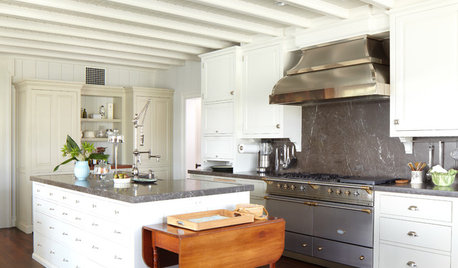
KITCHEN DESIGNHow to Find the Right Range for Your Kitchen
Range style is mostly a matter of personal taste. This full course of possibilities can help you find the right appliance to match yours
Full Story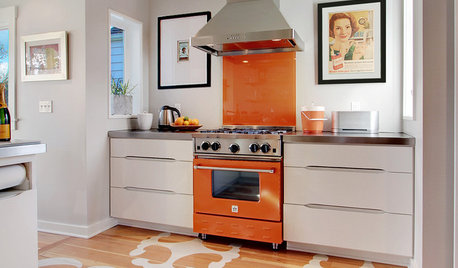
HOUSEKEEPINGHow to Clean Your Range and Oven
Experts serve up advice on caring for these kitchen appliances, which work extra hard during the holidays
Full Story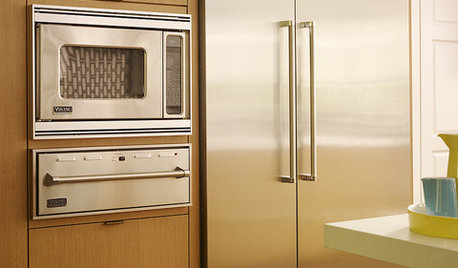
KITCHEN DESIGNA Cook’s 6 Tips for Buying Kitchen Appliances
An avid home chef answers tricky questions about choosing the right oven, stovetop, vent hood and more
Full Story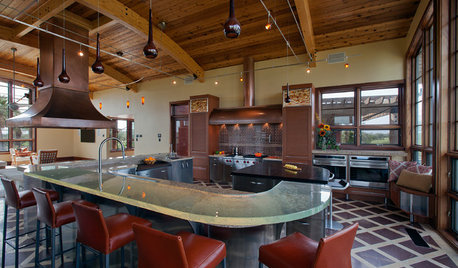
KITCHEN DESIGN9 Award-Winning Kitchens from KBIS 2013 to Drool Over
See top-rated designs from this year's Kitchen and Bath Industry Show and get details about the designers' visions
Full Story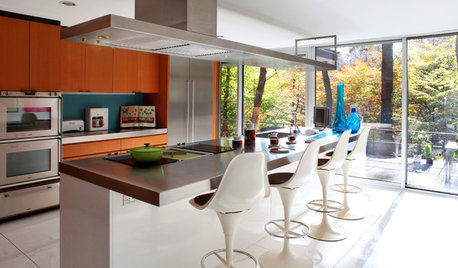
KITCHEN APPLIANCESLove to Cook? You Need a Fan. Find the Right Kind for You
Don't send budget dollars up in smoke when you need new kitchen ventilation. Here are 9 top types to consider
Full Story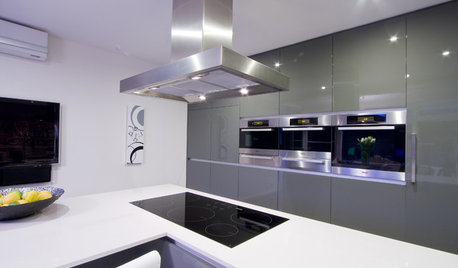
KITCHEN APPLIANCESFind the Right Cooktop for Your Kitchen
For a kitchen setup with sizzle, deciding between gas and electric is only the first hurdle. This guide can help
Full Story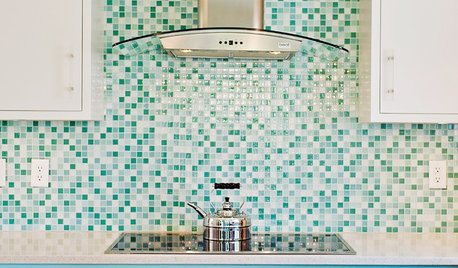
KITCHEN DESIGN9 Popular Stovetop Options — Plus Tips for Choosing the Right One
Pick a stovetop that fits your lifestyle and your kitchen style with this mini guide that covers all the basics
Full Story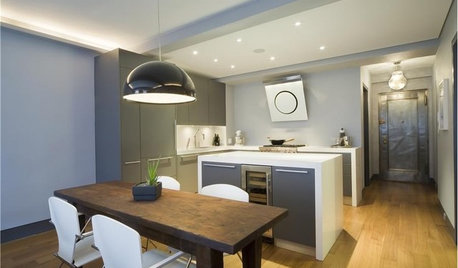
KITCHEN DESIGNHow to Choose the Right Hood Fan for Your Kitchen
Keep your kitchen clean and your home's air fresh by understanding all the options for ventilating via a hood fan
Full Story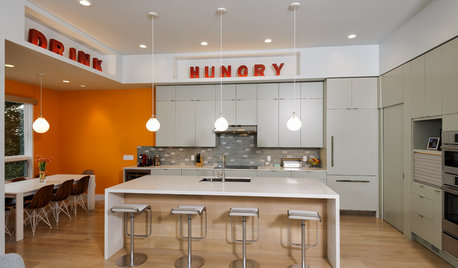
HOUZZ CALLShow Us the Best Kitchen in the Land
The Hardworking Home: We want to see why the kitchen is the heart of the home
Full Story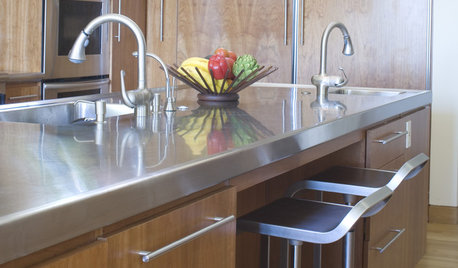
KITCHEN DESIGNDesign an Easy-Clean Kitchen
"You cook and I'll clean" might no longer be a fair trade with these ideas for low-maintenance kitchen countertops, cabinets and floors
Full Story



antss